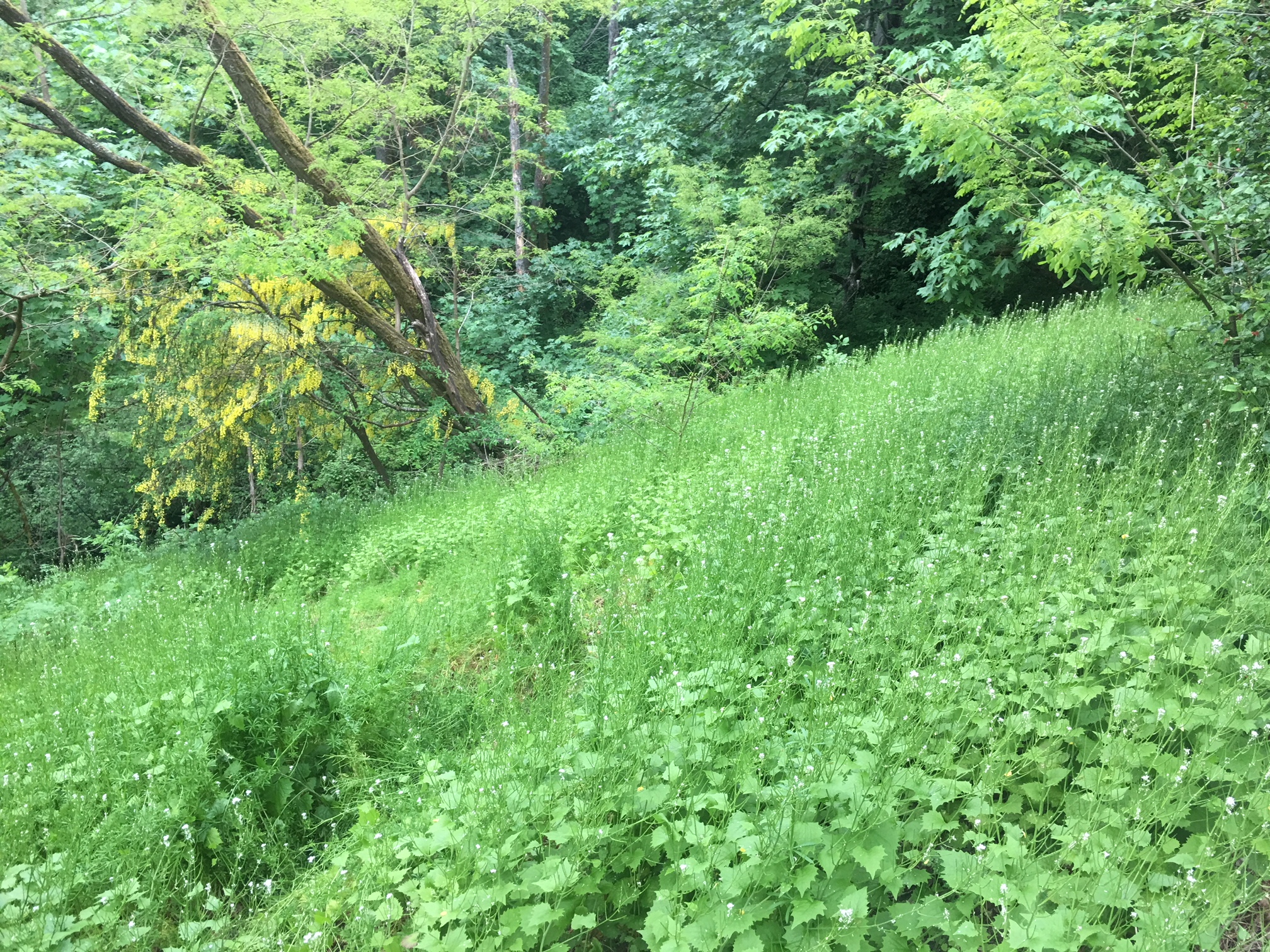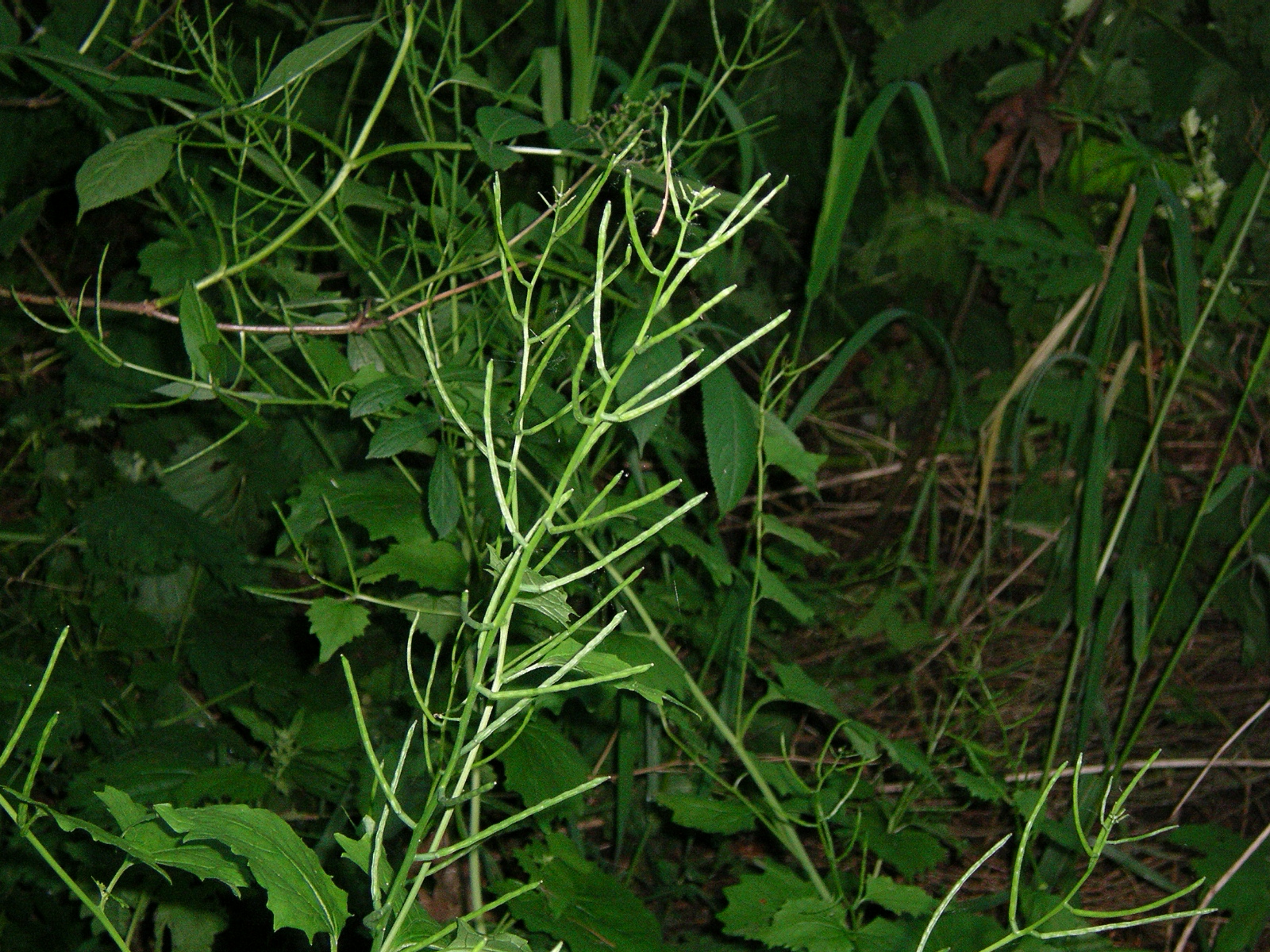Garlic mustard identification and control
Information about the noxious weed garlic mustard. Garlic mustard is also known by its Latin name, Alliaria petiolata.
About this weed
Garlic mustard is a regulated Class A noxious weed. This means eradication is required state-wide. Garlic mustard is also on the Washington quarantine list and it is illegal to buy, sell or offer it for sale in the state.
Garlic mustard is known as Alliaria petiolata in the mustard family, and as garlic root, hedge garlic, sauce-alone, Jack-in-the-bush, penny hedge, and poor man’s mustard.

Why it's a problem
Garlic mustard spreads by seed outside of where it is planted and crowds out other vegetation. Plants begin to grow early in the spring, outcompeting native and beneficial species that are still dormant. Although edible to people, it is not eaten by local wildlife or used by local insects. It is difficult to control once it is growing in an area. It can cross-pollinate or self-pollinate and has a high seed production rate. This helps garlic mustard outcompete native plants, even in a stable ecosystem. Garlic mustard also produces chemicals that can reduce the growth of soil fungi. This soil fungi is needed for healthy tree growth and survival. If left unchecked, garlic mustard can change the structure of forest plant communities.
Plant description
Garlic mustard is a biennial (2 year life cycle) plant native to Europe, western and central Asia, and northwestern Africa. Garlic mustard often smells like garlic, especially in the early spring.
In the first year, it has low growing “clumps,” leaves are rounded to kidney shaped and coarsely toothed or scalloped on the edges.
In the second year, its upright stems grow to around 3 feet tall (up to 6 feet) from the center of “clumps.” Leaves along the stem are more triangular in shape and coarsely toothed.
Small, white, 4-petaled flowers grow in clusters at the top of mature plants from April to May.
Seed pod production occurs after flowering. Seed pods are long, slender, and upright. Pods will turn from green to brown and split open once matured, releasing small black seeds. Small seeds are easily spread, so prevention is key with this plant.
Garlic mustard’s “S-shaped” root helps the plant hold onto the soil in difficult conditions.






Be aware of look-alike plants
In its rosette stage, garlic mustard looks like several native plants and some common weeds.
One way to tell the difference between garlic mustard and other plants is to feel the leaves. Most similar looking plants have fuzzy or hairy leaves. However, garlic mustard leaves are smooth and mostly hairless. Garlic mustard is also the only one of these that smells like garlic when you crush their leaves.
When in doubt, take photos and share them with us or report them on iNaturalist.
What to do if you find it
Please notify us if you see garlic mustard growing in King County. Property owners are legally required to control garlic mustard plants on their property. We can provide the property owner or public agency with site-specific advice on how best to remove it. Also, because garlic mustard is not established everywhere in King County, we can stop it from spreading if we act quickly. We map all known locations of regulated noxious weeds to help locate new infestations in time to control them.
Control methods
We recommend using a combination of methods to control noxious weeds. In areas with few weeds, it is important to act quickly before they become harder to control. Make a long-term plan as it often takes several years to get rid of most weeds. Start in the least infested areas first and then move into more heavily infested areas.
Garlic mustard is very difficult to eradicate once it is established. It's best to familiarize yourself with the flower, plant, and habitat where it grows to find infestations early. Check sites regularly to remove plants before seeds set.
Once garlic mustard infestations have been controlled, use woodchip mulch to cover the bare areas. This helps reduce seed germination. Infestation sites should be monitored every year for new plants. It's best to check these sites for 3-4 years afterwards to ensure the population has been controlled.
Manual control
Hand-pulling individual plants is effective if the entire root is removed. Use a digging tool to loosen the soil around the root. Then, grasp the base of the stem and pull slowly to remove the entire root.
Plants with flowers or seed pods should be put in a bag and discarded in the garbage. Carefully and thoroughly brush off boots, clothes, and tools before leaving the area to avoid carrying the tiny seeds to new places.
Mechanical control
Mowing or weed whacking garlic mustard does not kill the plants. Stems will grow back from the root crown and the cut stems may continue to form seeds afterwards. Plants can be cut back only if there is follow up digging or treatment with herbicide within a week or so.
Chemical control
Stay safe when using herbicide:
- Always read the label before use.
- Wear a long-sleeved shirt, long pants, shoes, and eye protection.
- Follow state and local regulations.
Herbicide may be useful for large, dense infestations. To work best, it should be applied in the spring or fall on seedlings and rosettes. Take care to avoid desirable plants.
For more information or a site-specific control recommendation in King County, contact the noxious weed program. For information in other counties in Washington state, contact your local weed or your local cooperative extension office.
Disposal instructions
Put plants in sturdy garbage bags. If the plants are in seed, carefully cut off the seed head and place in a bag without dispersing the seeds. Dispose of garlic mustard plants in household garbage or take to a transfer station for disposal. Do not put plants in compost or yard waste bins. Never dump plant material in parks or natural areas because weeds can spread from yard waste piles.
Noxious Weed Disposal - Washington State Noxious Weed Control Board
Learn more about garlic mustard
Read garlic mustard fact sheet (1727KB)
This fact sheet is also available in these languages:

 Translate
Translate